Content Strategy
Make use of content strategy to deliver great digital experiences.
Content strategy involves planning, creating, delivering, and governing content that meets the needs of its users and achieves an organization's goals. Content strategy is an essential element of effective digital web services and communication for government agencies.
Related Policy
21st Century IDEA & M-23-22
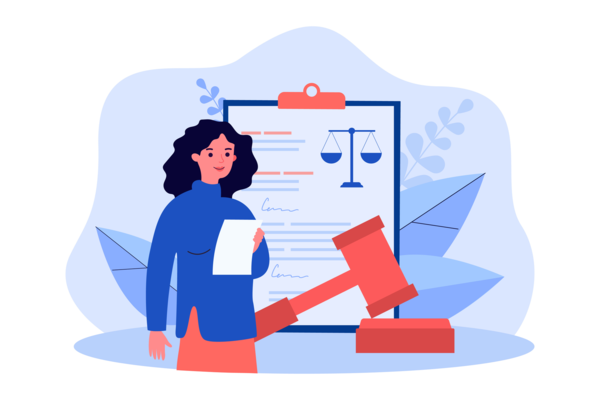
Content strategy: essential knowledge
-
An introduction to structured content
Learn how to transform how people find, understand, share, use, and reuse government information.
-
An introduction to trust
Learn how to create websites that people trust.
-
Introduction to translation technology
Learn how and why to use translation technology to create multilingual content.
-
An introduction to plain language
Create communication that is clear and easy to understand for your target audience.
-
Writing for the accessible web
Learn how to write and design web content that is accessible for everyone.
Content Strategy events
USWDS Monthly Call - November 2023
USWDS Monthly Call - October 2023
Content Strategy news
Reassessing priorities: Adapting to additional work without additional resources
The Office of Natural Resources Revenue’s Open Data, Design, and Development (ODD) team is taking on management of a fourth website, despite being short-staffed. As a result, they have revisited and reprioritized their yearly goals. To do so, they utilized a prioritization matrix, developed a structured impact assessment, and laid out a transition plan. Their process ensured realistic workload adjustments, improved team morale, and highlighted the importance of practical goal-setting, especially when teams are short-staffed.— via Office of Natural Resources Revenue
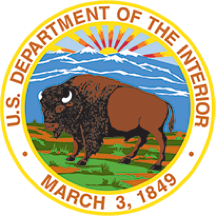
Designing for people with disabilities
The User Experience (UX) team at USA.gov’s Public Experience Portfolio recently conducted a study to analyze the experiences of individuals who access USA.gov through assistive technology. The team partnered with a local organization to gather insights from a diverse group of participants, many of whom are blind or deaf. The study revealed various habits and challenges faced by these users, such as a preference for mobile sites, difficulty with website carousels, and a reliance on clear headings and action-oriented descriptions. These findings can guide improvements in accessibility, such as clever link labeling and better navigation aids for assistive technology users.— via USA.gov

Bridge the gap between policy and implementation: Impactful solutions and strategies for success from Digital.gov’s spring 2024 summit
The summit highlighted digital transformation, emphasizing the significance of recent OMB memos for improving accessibility and customer experience.
Digital front door: Expanding access to VA
More Veterans are turning to the U.S. Department of Veterans Affairs (VA) for healthcare and benefits, accessing these services online through tools like the VA Health and Benefits mobile app and VA.gov. With over 2.28 million app downloads and 17.8 million monthly visitors on VA.gov, these digital tools provide faster, easier, and more inclusive access to VA services. Learn more about how these technologies are often Veterans’ first interaction with VA by watching their latest video, Digital Front Door: Expanding Access to VA.— via U.S. Department of Veterans Affairs
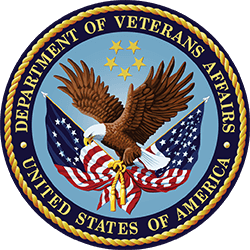
Case study: Removing barriers to applying for a presidential pardon
At the Department of Justice, Access DOJ and the Office of the Pardon Attorney (PARDON) partnered to simplify and streamline the presidential pardon application process. By conducting usability testing and gathering feedback, they identified key issues with the existing application, such as its complexity and length. See how redesigning the forms to be more accessible and understandable led to a more efficient process for both applicants and staff.— via Department of Justice
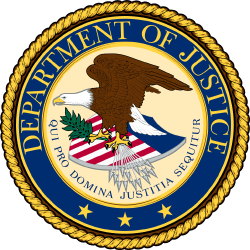
Resources on Content Strategy
-
An introduction to working with social media influencers
Learn how to partner with social media influencers and design, implement, and measure an influencer program.
-
The CDC Clear Communication Index
The CDC Clear Communication Index is a research-based tool to help you develop and assess public communication materials.
-
FY 23 Governmentwide Section 508 Assessment
Report: Assessment of compliance with Section 508 requirements.
-
An introduction to content
Best practices for creating clear, useful, digital content for federal websites and digital services.
-
Moving to .gov
If you’re moving to .gov from another top-level domain, like .com, .org, or .us, here are some best practices to help you plan that transition.
-
PlainLanguage.gov
A resource to help federal employees write in plain language and comply with the Plain Writing Act of 2010.
-
An introduction to structured content
Publishing content as modular pieces of information that are tagged with machine-readable descriptions can transform how people find, understand, share, use, and reuse government information.
-
An introduction to trust
Guidance on how to build government websites that people can trust.
-
Making the big move: Search in support of federal web modernization
In this special report, we discuss a website redesign’s nine phases and their impact on search.
-
Introduction to translation technology
What is translation technology? This introductory resource will help you understand how and when to use translation technology to provide meaningful access for people with limited English proficiency.
Tools and Services
-
18F
We help government agencies fix technical problems, build products, and improve how government serves the public through technology.
-
PlainLanguage.gov
Guidance on the use of plain language for government communications and training for federal employees.
-
Presidential Innovation Fellows
We help government agencies fix technical problems, build products, and improve how government serves the public through technology.
-
The Guide to the Paperwork Reduction Act
Get help with the PRA, planning and submitting an information request, and finding your agencies agency’s PRA contact.
-
U.S. Digital Service
We deploy small, responsive groups of designers, engineers, product managers, and bureaucracy specialists to work with and empower civil servants.
-
10x
Provides funding for new technology projects or products across government, from the TTS office of investments.
-
DotGov Registry
We make it easy to register and manage a .gov domain for US-based government organizations.
-
Login.gov
An identity management service that provides secure and private online access to participating government programs.
-
Open Opportunities
Discover opportunities across government that will help you build and make connections.
-
Pages
A publishing platform that helps federal partners launch, maintain and manage Government websites.
More News and Events on Content Strategy
632 posts
Reassessing priorities: Adapting to additional work without additional resources
The Office of Natural Resources Revenue’s Open Data, Design, and Development (ODD) team is taking on management of a fourth website, despite being short-staffed. As a result, they have revisited and reprioritized their yearly goals. To do so, they utilized a prioritization matrix, developed a structured impact assessment, and laid out a transition plan. Their process ensured realistic workload adjustments, improved team morale, and highlighted the importance of practical goal-setting, especially when teams are short-staffed.— via Office of Natural Resources Revenue

Designing for people with disabilities
The User Experience (UX) team at USA.gov’s Public Experience Portfolio recently conducted a study to analyze the experiences of individuals who access USA.gov through assistive technology. The team partnered with a local organization to gather insights from a diverse group of participants, many of whom are blind or deaf. The study revealed various habits and challenges faced by these users, such as a preference for mobile sites, difficulty with website carousels, and a reliance on clear headings and action-oriented descriptions. These findings can guide improvements in accessibility, such as clever link labeling and better navigation aids for assistive technology users.— via USA.gov

Bridge the gap between policy and implementation: Impactful solutions and strategies for success from Digital.gov’s spring 2024 summit
The summit highlighted digital transformation, emphasizing the significance of recent OMB memos for improving accessibility and customer experience.
Digital front door: Expanding access to VA
More Veterans are turning to the U.S. Department of Veterans Affairs (VA) for healthcare and benefits, accessing these services online through tools like the VA Health and Benefits mobile app and VA.gov. With over 2.28 million app downloads and 17.8 million monthly visitors on VA.gov, these digital tools provide faster, easier, and more inclusive access to VA services. Learn more about how these technologies are often Veterans’ first interaction with VA by watching their latest video, Digital Front Door: Expanding Access to VA.— via U.S. Department of Veterans Affairs

Case study: Removing barriers to applying for a presidential pardon
At the Department of Justice, Access DOJ and the Office of the Pardon Attorney (PARDON) partnered to simplify and streamline the presidential pardon application process. By conducting usability testing and gathering feedback, they identified key issues with the existing application, such as its complexity and length. See how redesigning the forms to be more accessible and understandable led to a more efficient process for both applicants and staff.— via Department of Justice

Three tips for using meta descriptions
At USA.gov and USAGov en Español, the goal is to make content more useful to the public, and meta descriptions are one way to help people quickly find the government information they’re looking for. These brief summaries of webpage content appear in search engine results to entice users to click through, attracting visitors to agency websites. Regularly updating these descriptions based on user data can enhance their effectiveness. Read in more detail about their three tips to create effective meta descriptions: identify commonly searched keywords, write engaging and actionable descriptions, and ensure each one is unique.— via USA.gov

One year with the new USAGov
It has been a year since USA.gov and USAGov en Español were relaunched using human-centered design principles. Using task backlog, the USAGov team has addressed content gaps, improved discoverability, and implemented technical updates. Through usability tests, visitor comments, and click behavior the team was able to unravel and respond to user feedback and unmet needs, leading to noticeable increases in visitor satisfaction and task accomplishment. Moving forward, the focus will shift to enhancing public engagement with the government, improving the search for benefits-related content, and exploring interactive and personalized user experiences.— via USA.gov

Progress towards delivering a digital-first public experience
Each year, more than 400 million individuals, families, businesses, organizations, and local governments get information and services from about 430 federal agencies and sub-agencies. The Biden-Harris administration is driving a bold vision for how government agencies serve their customers digitally with OMB’s ten-year roadmap for a modern digital experience. Agencies have already made significant strides. Learn about recent successes by the IRS, CDC, NASA, and FEMA, and how OMB will continue to collaborate with agencies to ensure ongoing improvement in digital government services.— via The White House

How USAGov uses data to improve content
Each month, USAGov’s content designers spend many hours ensuring that the content on USA.gov and USAGov en Español is up-to-date, accurate, and meets user needs. Learn how their team does holistic reviews of each topic section based on a rolling calendar with the goal of updating all content at least every 6 months.— via USA.gov

Spring 2024 Community Summit
Equity in action: GSA’s study on remote identity-proofing technologies
The Biden-Harris President’s Management Agenda (PMA) emphasizes an effective, equitable and accountable government. As part of this effort, the General Services Administration (GSA) is conducting a study on the equity of remote identity proofing. The study aims to assess and improve the accessibility and equity of remote identity verification technologies such as facial matching systems. Learn more about the context, purpose, and progress of the study, and how it supports GSA’s goal of enhancing digital government services and prioritizing equitable design practices.— via Performance.gov
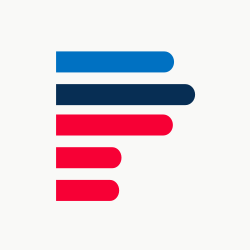
Optimizing the federal digital experience: aligning content governance, coordination, and database development
This blog post dives into the details of building a dynamic content database and audit for onrr.gov. Learn how effective subject matter expert (SME) coordination, strategic content planning, and application of visualization tools contribute to enhancing content governance and user experience on a federal website.— via Office of Natural Resources Revenue

Timeless top 10 best practices for great government websites
While the field of federal web management continues to evolve, the core best practices have remained essentially unchanged for two decades.
GSA Issues Report to Congress Highlighting Need for Improvement in Federal Government Section 508 Compliance
The report, the FY23 Governmentwide Section 508 Assessment, evaluates reporting entities’ adherence to the criteria established by the White House Office of Management and Budget (OMB) in coordination with GSA, the White House Office of Science and Technology Policy (OSTP), and the U.S. Access Board (USAB). It provides a baseline and recommendations for strengthening compliance initiatives and enhancing Section 508 activities across the federal government.— via General Services Administration

Delivering on 21st Century IDEA: A case study from the GSA SmartPay team (Part 3)
A GSA SmartPay product owner shares her experience designing user-centered, accessible content for multiple audiences.
Delivering on 21st Century IDEA: A case study from the GSA SmartPay team (Part 2)
A GSA SmartPay product owner shares his experiences as a first-time product owner in a government agile development project.
Delivering on 21st Century IDEA: A case study from the GSA SmartPay team (Part 1)
The GSA SmartPay program, the largest government charge card and commercial payment solutions program in the world, celebrated their 25th anniversary by launching three new websites with a user-centered, agile approach.
USWDS Monthly Call - November 2023
Defining benchmarks and targets for intranet KPIs
Discover the keys to intranet success by harmonizing objectives, metrics, benchmarks, and targets. Elevate your organization’s intranet to new heights!
















